Recently, I ranked the top 100 prospects in baseball heading into the 2020 season, then went deeper with my team-by-team rankings for the American League. Now it's time to look at the National League.
A quick refresher on a key term you'll see throughout the team lists: I use something called Future Value (FV) as a term that sums up the value of a player into one number. It's graded on the 20-80 scouting scale. A low-end everyday player is a 50, which correlates to 2.0 WAR; a well-above-average position player, No. 3 starter or high-end closer is a 60, or somewhere around 3.0 WAR. I refrain from tossing out an 80 on a minor leaguer because that would imply he is expected to be one of the top players in baseball. Wander Franco, this year's top prospect, is the best prospect that baseball has seen since Mike Trout, and his FV is 70.
In addition to the top 10 for each franchise, I rank every player with a Future Value greater than 40 for each franchise before summing up the best of the rest. You can see the full scouting report for the players in my top-100 list here.
And now on to my rankings:
Jump to ... NL East | NL Central | NL West
National League East
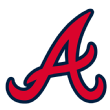
Atlanta Braves
1. Cristian Pache, CF, 60 FV (No. 17 in top 100)
2. Drew Waters, CF, 55 FV (No. 38)
3. Ian Anderson, RHP, 50 FV (No. 49)
4. Shea Langeliers, C, 50 FV (No. 83)
5. Braden Shewmake, SS, 50 FV (No. 98)
6. Kyle Wright, RHP, 50 FV
7. Bryse Wilson, RHP, 50 FV
8. William Contreras, C, 50 FV
9. Tucker Davidson, LHP, 45+ FV
10. Kyle Muller, LHP, 45 FV
11. Alex Jackson, C, 45 FV
2020 impact: Kyle Wright and Bryse Wilson
Ranked breakout pick: Tucker Davidson
Unranked breakout pick: Michael Harris
Ranked prospects beyond the top 100: Wright has seen his stuff tick up in pro ball, now sitting 94-97 mph, but his command hasn't been as sharp, somewhat typical when velocity spikes. Atlanta is deep enough that he can be worked in for shorter stints out of the bullpen, but it might be best for him to fine-tune his starter traits on a noncontender that can afford to send him out there every fifth day. Wilson is still largely who he was in high school: an athletic bulldog who can manipulate and command a plus fastball, a solid changeup and a fringy breaker. He's been working to figure out how to get a consistently average breaking ball, as that will be what makes him a consistent rotation option. Contreras is the little brother of Cubs catcher Willson and has the tools to be an everyday option (could reach average offense, above-average defense), but scouts are a little less enthusiastic this year than they were last year.
Davidson hit 100 mph this winter at Driveline and was just a tick or two below that in the 2019 season. He's upped the effort to his delivery a bit, his curveball is now plus and his slider, changeup and command all at least flash average: The elements are here for a No. 3 starter and top-100 prospect. Muller also frequents Driveline and was up to 98 mph from the left side in the 2019 regular season. He doesn't have the plus secondary pitch but has fourth-starter stuff. He's just held back by the 40-grade command that this velo spike has created. It'll flash average at times, just very inconsistently. Jackson made huge strides in his third full year behind the plate, going from below average to among the best in the minors in framing. He's always had an easy plus arm and 70-grade raw power but swings and misses a lot getting to that power. Jackson is now a close-to-the-majors, power-and-framing backup with a chance to be a low-end regular.
Others of note: RF Michael Harris was a two-way guy in high school with top-five-round talent on the mound, but a strong late workout at Trust Park moved him into third-round contention for the Braves. He's a solid athlete with plus raw power and above-average defense in right field who hit better than expected in his pro debut. SS Vaughn Grissom was seen a lot, as the high school teammate of fifth overall pick Riley Greene in 2019. The positional fit isn't clear (the Braves think he's a shortstop), but there's enough offensive upside to profile as an everyday player at third with continued improvement. 3B C.J. Alexander missed much of 2019 with an injury but has performed better than expected in pro ball, with surprising feel to hit and play third base to go with the expected plus raw power and arm strength. 1B Bryce Ball is arguably the best late pick in the 2019 draft so far, with 70-grade raw power and solid pitch selection that made for a loud pro debut, but he's probably more of a .250 hitter without much speed or defensive value, so he'll have to mash.
RHP Jasseel De La Cruz is up to 99 mph and has a horizontally shaped slider that flashes plus from a lower slot, with a changeup and command that lag behind; he likely will land in the bullpen long term. RHP Victor Vodnik is a smallish righty whose velo dipped in his draft year but popped higher than ever in his pro debut, hitting 98 mph. He mixed in a 55- or 60-grade power curveball, but his size and lack of finesse suggest it's a shorter-stint landing spot down the road. RHP Huascar Ynoa was acquired for Jaime Garcia and was added to the 40-man roster for 2019 at age 20, so I thought the power arm would be moved to the bullpen. He did for a time and got broken in at the MLB level there, but Atlanta tried to get him to develop his off-speed pitches more in longer stints in Triple-A. He's up to 100 mph with a 55- or 60-grade slider and a below-average changeup and command. RHP Freddy Tarnok was a 2017 over-slot prep arm due to his projectable frame and clean arm action. His stuff has popped for stretches (up to 97 mph, three pitches flash above average, starter traits), but his velo dipped into the 80s for a spell. We're still waiting for the breakthrough, but he's only 21.
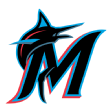
Miami Marlins
1. Jazz Chisholm, SS, 55 FV (No. 37 in top 100)
2. Edward Cabrera, RHP, 50 FV (No. 53)
3. Sixto Sanchez, RHP, 50 FV (No. 55)
4. JJ Bleday, RF, 50 FV (No. 56)
5. Monte Harrison, CF, 50 FV
6. Lewin Diaz, 1B, 50 FV
7. Braxton Garrett, LHP, 45+ FV
8. Trevor Rogers, LHP, 45+ FV
9. Jesus Sanchez, RF, 45 FV
10. Connor Scott, CF, 45 FV
11. Peyton Burdick, RF, 45 FV
12. Kameron Misner, RF, 45 FV
13. Nasim Nunez, SS, 45 FV
2020 impact: Jazz Chisholm
Ranked breakout pick: Peyton Burdick
Unranked breakout pick: Breidy Encarnacion
Ranked prospects beyond the top 100: Harrison has huge physical tools (65 raw power, 70 arm, 60 speed, 60 defense in center field) and has had to tweak his offensive approach to adjust to upper-level pitching since coming over in the Christian Yelich deal. For now, he's still hitting it about as hard as any up-the-middle player in the minors, with improved/acceptable contact rates but not a ton of loft. Diaz, acquired at the trade deadline last summer from Minnesota, is another free-swinging type in this system but not to the point that it's a fatal flaw. He has advanced contact ability to work around it, plus raw power and a plus glove at first base. Garrett was the seventh overall pick in 2016 out of an Alabama high school and had Tommy John surgery in 2017, returning in 2019 with a solid season in High-A at age 21. The stuff is basically back (knockout plus hook, strong command, up to 96 mph, starter traits) and he threw more than 100 innings in his first year back, so he'll likely be a top-100 type with another strong season. Rogers was very old for the 2017 draft class, turning 20 later that year, and his fringy slurve was among the things that made me skeptical of him. He broke out in 2019 at High-A and Double-A, getting back on track to pre-draft expectations in the same way Garrett did. Rogers works in the low 90s with a bag of 50- or 55-grade pitches and command. Sanchez was dealt from Tampa Bay in the Nick Anderson deal and is pretty easy to break down. He has at least plus raw power and bat speed in a traditional right-field profile, but his pitch selection is bad, so it must improve for him to be a big leaguer of any consequence.
Scott was a uniquely tooled-up prep prospect in 2018: 6-foot-4 with 70-grade speed, a plus arm and an above-average raw power projection. He has a pretty swing reminiscent of former prep teammate Kyle Tucker and held his own in 2019 at Low-A at age 19, but the hittability hasn't quite caught up with the looks of his swing. Burdick was under the radar in the 2019 draft as a 22-year-old redshirt junior at Wright State who already had Tommy John surgery. He had a fantastic draft year, featuring plus raw power and arm strength along with big exit velos. He'd be the leading candidate to move up a round or two if the 2019 draft were redone today. If Burdick, now 23, hits this year like he did in Low-A at the end of 2019, he might be a quick-to-the-majors top-100 prospect. Misner has massive raw tools (plus speed, plus-plus raw power, above-average arm) that had him in contention to be one of the top 10 picks as SEC play began a year ago. His timing mechanisms gave him trouble with better stuff, and he slid to the 35th overall pick. He didn't have much of a track record due to injury and a coaching carousel in college, so Miami thinks there are adjustments to be made that can unlock Misner's upside. Nunez is a slick-gloved switch-hitting shortstop with plus speed and a plus arm. He has above-average contact skills but marginal power that he doesn't presently get to in games.
Others of note: RF Jerar Encarnacion is a strongly built 6-foot-4 power-hitter with plus raw power and an above-average arm. He's a bit of a free-swinger, power-focused in his approach and fringy in right field. 3B Osiris Johnson was a sushi-raw, young-for-the-class tools bet as a second-rounder in the 2018 draft; he has raw power and profiles at third, but little is sure here. CF Victor Mesa Jr. has surprisingly surpassed his more famous older brother, CF Victor Victor Mesa, who had a disastrous pro debut after signing for $5.3 million. Junior got $1 million and was seen as a tweener-type outfielder, but his contact and defensive feel exceeded expectations. RF Diowill Burgos, 19, was acquired this winter from St. Louis for Austin Dean and profiles well with solid average hit/power tools from a pretty lefty swing but limited speed and defense. C Will Banfield is a defensively minded backup type who has enough raw power that he could become a low-end regular. SS Jose Salas was Miami's top 2019 international signing at $2.8 million and profiles as an offensively minded middle infielder.
RHP Nick Neidert had a lot of similarities to Zac Gallen but never got the velo spike, so now the hope is that he is a finesse righty who can turn into Kyle Hendricks. RHP Jorge Guzman is regularly up to 100 mph and was one of the main pieces in the Giancarlo Stanton trade. He has a 55-grade slider to work in middle relief, but the starter traits have been backing up recently. RHP Breidy Encarnacion has similarities to Chris Mokma below: Both are projection righties with fringe stuff that check all the boxes for improvement. Encarnacion's unique trait is elite fastball spin/rise that already let his 87-91 mph offerings play better than it seems they should. LHP Alex Vesia is a reliever type who gets results sitting in the low 90s and mixing in a plus changeup. RHP Josh Holloway had Tommy John in 2017 and his changeup/command probably push him to a relief role ultimately, where his best qualities (heater up to 100 mph, plus curveball) will play late in games, but there's little sustained track record of success. RHP Evan Fitterer was an over-slot prep arm in 2019 who works in the low 90s with a potentially above-average sinker/slider combo and the feel to start. RHP Chris Mokma is a classic projection case who sits around 90 mph now but has near-ideal arm action, athleticism, projection and delivery. His slider is the question, but if it can be consistently average, he'll move up this list quickly.

New York Mets
1. Ronny Mauricio, SS, 55 FV (No. 43 in top 100)
2. Francisco Alvarez, C, 50 FV (No. 87)
3. Andres Gimenez, SS, 50 FV (No. 99)
4. Mark Vientos, 3B, 50 FV
5. Brett Baty, 3B, 45+ FV
6. Matt Allan, RHP, 45+ FV
7. David Peterson, LHP, 45 FV
8. Thomas Szapucki, LHP, 45 FV
9. Franklyn Kilome, RHP, 40+ FV
10. Junior Santos, RHP, 40 FV
2020 impact: David Peterson
Ranked breakout pick: Matt Allan
Unranked breakout pick: Shervyen Newton
Ranked prospects beyond the top 100: Vientos was both young for his draft class relative to other high schoolers and also emerged early as an elite prospect. Some (including Mets personnel) squint and see a talent comparable to Nolan Arenado at the same stage, while others see a below-average hitter, runner and fielder. There's undeniable in-game power, more projection and an arm that fits anywhere on the field. Baty is another extreme case of one of the most important stats in draft models: draft-day age of a prep hitter. He was 19.6 on 2019 draft day, making him almost a month older than Vientos, a 2017 prep draft pick. The logic behind this empirical research is that Baty has been facing pitchers at least one year younger than he is every time he's been scouted, potentially warping what his offensive ability really is, while he's also more mature physically. This means that Baty now needs to perform in the minors more quickly than his draft peers: In 2020, he'll go to Low-A, where Vientos just had a solid season. Baty was a top-10 talent outside of age, with the optimist report giving him a 6 on hit and power tools and a good shot to stick at third base, though he's physically large for the position.
Allan was a famous prep righty (three 55-grade pitches, up to 96 over the summer) who had a velo spike in the spring (sitting mid 90s, curveball flashing 65 or 70) and worked into mid-first-round consideration. His command was understandably a little wonky with the new arm speed, and his bonus demands (and turning down multiple big seven-figure offers in the first round) led to his sliding to the third round, where the Mets snapped him up for $2.5 million. Peterson is a 6-6 pitchability lefty who works with a solid average four-pitch mix and above-average command; he's got a good shot to get some MLB starts late in 2020. Szapucki had Tommy John in 2017 but still runs his heater up to 96 mph and has a plus curveball. The command, changeup and durability are questionable enough that he's likely to be used in shorter stints. Kilome had Tommy John in late 2018 after being acquired from Philadelphia. He was back on a mound throwing bullpens in the fall. He fits in the fourth starter/setup guy area, depending on how his command bounces back from surgery. Santos is a 6-8 teenager who has been into the mid 90s, but the off-speed stuff and command are still works in progress. The broad elements to start are here, so he's worth keeping an eye on in 2020.
Others of note: SS Shervyen Newton, 20, has a near ideal 6-4 frame for the power-hitting infielder that clubs are looking for even more these days. He probably slides over to third base and has the plus raw power to profile there, but the quality of his at-bats is still highly variable. C Endy Rodriguez is a switch-hitting teenage catcher with above-average-to-plus contact skills and defensive chops. He's a good enough athlete to play other positions and has good enough power and arm strength to let the other tools play. 3B Jaylen Palmer was an under-the-radar late pick in 2018 out of a New York City high school who has performed better than expected, particularly with strong in-game contact via average exit velos and plus raw power projection, but the rest of the profile is unsettled. CF Adrian Hernandez missed all but four games of 2019 with a torn hamstring but has considerable upside via above-average raw power and speed as a top member of the 2017 international signing class. LF Carlos Cortes has a track record of hitting going back to his high school sophomore year (when he stood out for elite bat control), a squat 5-foot-8 frame and being a multipositional switch-thrower. He's landed in left field as the speed and defensive value have dried up, but he still has above-average contact skills to go with plus raw power.
RHP Josh Wolf joined Baty and Allan as the three high-end prospects from a top-heavy 2019 draft class for the Mets. Wolf got $2.15 million thanks to his loud raw stuff (mid 90s with plus life and a plus curveball), while some worry his slight build will limit his workload. RHP Robert Dominguez was a 17-year-old with generic arm strength looking for a decent bonus and getting few bites for much of 2019. His velo popped at a summer event, going from 90-93 to 94-97, and while most teams wanted to see another couple of outings, the Mets jumped in with $95,000. The 6-4 Dominguez continued to improve, hitting 99 mph and flashing a plus curveball in the Dominican instructional league after signing, when most of the Mets' front office still hadn't seen him. He should dominate short-season hitters in his pro debut and could move up quickly, with similar late-emerging stuff to Wolf's but with even less of a track record. LHP Kevin Smith was a 2018 seventh-rounder out of Georgia as a generic lefty who sat at 90 and didn't have a firm role. He's taken a big step forward in pro ball, getting to Double-A in his first full season, using his solid average stuff, deception and feel. RHP Jordany Ventura is an athletic 6-foot teenager who reaches 95, has an above-average slider and shows the traits to be a starter but started the 2019 season in the DSL.

Philadelphia Phillies
1. Spencer Howard, RHP, 60 FV (No. 21 in top 100)
2. Alec Bohm, 3B, 55 FV (No. 42)
3. Bryson Stott, SS, 45+ FV
4. Luis Garcia, SS, 45 FV
5. Mickey Moniak, CF, 45 FV
6. Simon Muzziotti, CF, 45 FV
7. Johan Rojas, CF, 45 FV
8. Francisco Morales, RHP, 45 FV
9. Adonis Medina, RHP, 40+ FV
10. Kendall Simmons, SS, 40+ FV
2020 impact: Alec Bohm
Ranked breakout pick: Bryson Stott
Unranked breakout pick: Erik Miller
Ranked prospects beyond the top 100: Stott is 6-foot-3 and deceptively good at shortstop, with average-to-above tools across the board, which led to his going 14th overall last summer and having a strong pro debut. There's clear top-100 and even top-50 upside by this time next year. Garcia played in Low-A as an 18-year-old last year and was BABIP unlucky, but he performed more as "head above water" than anything else. He has above-average contact skills, with above-average speed, defense and arm tools, but he will probably take a while to get to his power in games given his development trajectory. Moniak was the first overall pick in 2016 out of a SoCal high school and can still run and defend as expected at that time. His offense hasn't quite come together, but the elements are there for league-average offense and above-average center-field defense. Muzziotti is a plus runner and strong center-field defender with good feel for the bat head but just an OK approach and very little power, along the lines of Ender Inciarte if it all comes together.
Rojas has some of the loudest tools in the system (plus projected raw power, run, field and throw) but with a free-swinging approach at the plate. He's still a teenager and will need to refine his game, but the tools are here for a solid reserve with upside for much more. Morales played last year as a teenager, hitting 98 mph and flashing an above-average-to-plus slider, but the delivery and changeup point to relief for now. Medina has had some top-100 attention recently but has leveled off a bit as his velo is down a little, his sinker doesn't draw many whiffs and his breaking ball has been inconsistent. He still looks likely to be a big leaguer of some consequence, but more at the back of a rotation or as a middle reliever. Simmons was off the radar of many scouts in high school as he was batting low in the lineup and striking out a lot, after showing big tools (plus raw power, bat speed, above-average speed, arm, SS fit) over the summer. He's remade his swing, which has improved his approach. He'll never be a plus hitter, but he now looks like a big leaguer.
Others of note: C Rafael Marchan has elite bat control and a decent eye with the ability to stick behind the plate, but he has zero in-game power, like literally: zero homers in four pro seasons. SS Jamari Baylor emerged in his draft spring at a Virginia high school with a bunch of above-average tools and more explosiveness than the summer before. There isn't a ton of track record, but there's everyday potential here. RF Jhailyn Ortiz got a big bonus at age 16 due to his 70-grade power and right-field arm, but many scouts were worried about the potential for a post-prime Cecil Fielder-esque physique. He's slimmed down some since then and moves surprisingly well in the outfield (though still not well), so the hope is for an everyday first baseman if the contact skills keep progressing. SS Nick Maton is a likely utility guy, as he's a strong defensive shortstop and has good control of the strike zone along with some loft to his swing but limited strength and a short-enough swing that there isn't much punch.
RHP Mauricio Llovera is a 5-11 righty with some effort and aggression that probably fits best in relief, especially after an arm issue in 2019, but he flashes three good pitches: a heater up to 96 mph, a plus splitter and an average-to-above slider. LHP JoJo Romero has shown a couple of different looks to scouts over the years -- it's safe to say that JoJo's velo has yo-yoed -- but he has always had a strong changeup and command along with feel to manipulate his breaking ball to the situation. He sits around 90 mph now and fits at the back of a rotation. LHP Erik Miller was up to 98 mph on the Cape with above-average-to-plus stuff, then worked more low 90s in the spring, dipping into the high 80s at times. He has four pitches that are average or better and starter command at the lower velocities, so there's a big leaguer of some kind here. RHP Starlyn Castillo is a stout righty who was up to 97 mph as a 15-year-old, helping him get a seven-figure bonus in the 2018 international signing class. His breaker is above average to plus and his changeup flashes average, but he's a maxed-out 6-footer and has some stiffness to his delivery and trouble with command.
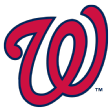
Washington Nationals
1. Carter Kieboom, SS, 55 FV (No. 35 in top 100)
2. Luis Garcia, 2B, 50 FV (No. 95)
3. Jackson Rutledge, RHP, 45+ FV
4. Wil Crowe, RHP, 45 FV
5. Mason Denaburg, RHP, 45 FV
6. Andry Lara, RHP, 40+ FV
7. Matt Cronin, LHP, 40+ FV
8. Eddy Yean, RHP, 40+ FV
9. Tim Cate, LHP, 40 FV
10. Seth Romero, LHP, 40 FV
2020 impact: Carter Kieboom
Ranked breakout pick: Seth Romero
Unranked breakout pick: Roismar Quintana
Ranked prospects beyond the top 100: Rutledge is a huge dude (6-foot-8, 260 pounds) with huge stuff (up to 100 mph, 65- or 70-grade slider) and some chance to start. He's still working on that, but he's had procedures on both hips, and guys this big and with this kind of arm speed are at elevated risk for other medical issues. Crowe had Tommy John surgery in 2015 and doesn't have a plus pitch or plus command, but he has grown into a bag of 50- and 55-grade pitches and command that profiles at the back of a rotation, possibly in 2020. Denaburg, a 2018 prep first-round pick, had one of the cleaner deliveries and records in recent memory (he had limited miles on his arm because he was also a catcher), but had a disastrous pro debut with a velo dip and biceps and shoulder issues covering his two pro summers. Rutledge, Denaburg and Romero have shown front-of-the-rotation stuff and command at times, and having three prospects at that level is more than almost every system in baseball, coming from one of the worst systems in the game.
Lara got a seven-figure bonus out of Venezuela in the 2019 international signing class, so he hasn't played an official pro game yet, but he is already moving up in the Nats system. Lara has a mature 6-3 frame and feel for pitching, with his raw stuff ticking up for fall instructional league. He's sitting 92-94, touching 96 mph, with a curveball that's flashing above average and a usable changeup. Cronin is an en vogue style of reliever: high slot, high-spin four-seamer with plus velocity (works 93-95 mph), an out-pitch curveball that flashes plus with high spin, decent command. He was throwing almost all fastballs at Arkansas last year, so he'll need to work in more off-speed pitches. Yean is a promising 18-year-old pitcher that's up to 96 mph, flashes three above-average pitches and has some chance to start. There's some relief risk, but he would have gone in the top two rounds if he had been born in the U.S. Cate fits best in relief due to his size, stamina and injury history, but he is starting for now. In short stints, he sits 92-95 mph with a wicked curveball that's at least a 60. Romero is back from Tommy John surgery and has been in trouble numerous times for off-the-field makeup concerns. Now for the positive: He's up to 96 mph and flashes three plus pitches and some starter traits. The upside is considerable and he's appeared to mature. The Nats think that with a great season, he could hit his innings limit at the end of the year in the big league pen.
Others of note: 1B Drew Mendoza is a three-true-outcomes type of masher, with elite pitch selection, plus-plus power and not a whole lot else. 3B Yasel Antuna got a huge bonus in the 2016 class but was passed by Luis Garcia internally. Injuries limited his 2019 season and he'll slide over to third base eventually, but he still shows offensive upside. RF Jeremy De La Rosa is a deceptively athletic outfield tweener that projects for above-average raw power and had a nice stateside debut in 2019. C Israel Pineda has been young for every level he's played at and played through a broken finger in 2019, so round up on his surface stats. There's a solid chance he's a big league backup and some chance for more. RF Roismar Quintana got the third-highest bonus from Washington in the 2019 signing class but has some buzz that he could emerge in his pro debut in 2020. He's already very strong for a 17-year-old, projecting for plus raw power, and all five tools are at least average.
National League Central
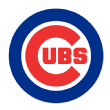
Chicago Cubs
1. Nico Hoerner, 2B, 50 FV (No. 48 in top 100)
2. Miguel Amaya, C, 50 FV (No. 65)
3. Brennen Davis, CF, 50 FV (No. 73)
4. Brailyn Marquez, LHP, 45+ FV
5. Cole Roederer, CF, 45 FV
6. Adbert Alzolay, RHP, 45 FV
7. Cory Abbott, RHP, 45 FV
8. Ronnier Quintero, C, 40+ FV
9. Kevin Made, SS, 40+ FV
10. Justin Steele, LHP, 40+ FV
2020 impact: Nico Hoerner
Ranked breakout pick: Cole Roederer
Unranked breakout pick: Chase Strumpf
Ranked prospects beyond the top 100: Marquez sits 94-97 mph and hits 100 with his heater as a starter from the left side, and he just turned 21. The worries are that he is a beefy 6-foot-4 and his off-speed pitches and command all point to more of a late relief role than a mid-rotation starter. Roederer was a nice find at 77th overall out of a SoCal high school in 2018. He had a solid full-season debut in 2019, showing a power-over-hit approach and solid center-field defense among his card of grade-50 or -55 tools. Alzolay might be the sixth starter for now, but he should be able to help in 2020 in a couple of roles. He sits 93-96 mph with a four-seamer that works for whiffs up in the zone along with a plus curveball, though his changeup is a distant third pitch.
Abbott was a late pop-up prospect who went 67th overall from Loyola Marymount in 2017, with a card full of 50- and 55-grade pitches and command. He has optimized his 90-93 mph fastball to play as league average with high spin and backspin-friendly tilt that works well up in the zone. He has plus command and an above-average breaking ball to profile as a fourth starter. Quintero is a showcase-friendly catcher (plus raw power and arm strength), and he received one of the biggest bonuses in the 2019 international class. He'll probably hit, but it's less clear if he'll stick behind the plate, in part because his deal was cut so early that most other clubs haven't seen him catch in years.
Made is a lanky, 6-foot-1 shortstop with plus athleticism who signed as the second big-money prospect in the Cubs' 2019 international class. He should stick at shortstop, and he has a plus arm, solid average speed and above-average bat speed; it's super early, but all the elements are here for an above-average everyday shortstop. Steele has a solid average three-pitch mix that includes a heater up to 96 mph and a 55-grade curveball, but his command is fringy, right on the borderline of fourth starter or setup reliever. He is 24 with a Tommy John surgery in the rearview mirror and just 13 appearances above A-ball.
Others of note: RHP Kohl Franklin made 11 starts in 2019, but his stuff took a step forward, touching 96 mph and flashing above-average stuff to go with the starter traits he had with average stuff in 2018. He could easily jump into the top 5 to 7 of this list by the end of the year with a strong full-season debut. RHP Ryan Jensen was Chicago's first-round pick last year and was up to 100 mph, holding mid-90s late into starts, with a shot to be a rotation piece as everything else projects as average. RHP Richard Gallardo sits low 90s and breaks off a plus breaking ball, but he is 6-foot-1 with ordinary athleticism and one separator at this point. RHP Michael McAvene was the closer for Louisville last year and was up to 100 mph -- to go with a 55-grade slider and reliever command. RHP Riley Thompson can run it up to 100 mph and shows a 55- or 60-grade breaking ball with improved command, but he was 23 in Low-A and had a Tommy John and little track record. LHP D.J. Herz popped up in the spring as a North Carolina prep who was sitting 89-92 mph with some projection, a lower slot and solid average stuff; he was a nice find in the eighth round.
2B Chase Strumpf was the 64th overall pick last summer as a hit-over-power offensive second baseman at UCLA. He'll probably get to High-A this year if he keeps hitting as expected. SS Zack Short is a utility type shortstop without big tools. He has a late-count approach and below-average contact because he gets to his fringy raw power in games. 2B Pedro Martinez, 19, is fine at second base but has a stocky 5-foot-11 frame that helps create 55-grade raw power that he is still learning to get to in games. 3B Christopher Morel is an aggressive swinger but with some contact skills and 60 raw power to fill out a traditional third base profile. SS Aramis Ademan is arrow down for now, with scouts saying he came into camp overweight when his average tool set already didn't have much margin for error. C Ethan Hearn is a plus defender with a plus arm and solid average raw power, but he has a swing that might need to be reworked to make more contact.
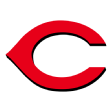
Cincinnati Reds
1. Tyler Stephenson, C, 50 FV (No. 78 in top 100)
2. Jose Garcia, SS, 50 FV (No. 85)
3. Hunter Greene, RHP, 50 FV (No. 89)
4. Nick Lodolo, LHP, 50 FV (No. 90)
5. Jonathan India, 3B, 50 FV (No. 94)
6. Mike Siani, CF, 45+ FV
7. Stuart Fairchild, CF, 45 FV
8. Jameson Hannah, CF, 45 FV
9. Tony Santillan, RHP, 45 FV
10. Tyler Callihan, 3B, 40+ FV
2020 impact: Jose DeLeon and Joel Kuhnel
Ranked breakout pick: Mike Siani
Unranked breakout pick: Debby Santana
Ranked prospects beyond the top 100: Siani was a famous prep standout, playing with Alek Thomas and Jarred Kelenic, two current top-100 prospects, as the underclass high schoolers from up North who stood out for Team USA. The two carrying tools of Siani that stood out first on those fields (plus defense in center field, great feel for contact) are still present. Siani projects as something like a 55 bat with 45 game power and 55 defense in center field, which is an above-average everyday player; the odds of this outcome will be much clearer after 2020, but I'll bet on the track record. Fairchild is an above-average-to-plus runner, fielder and thrower with 50 raw power that's been just stiff enough for him to profile more as a fourth outfielder. In 2019, Fairchild made some swing adjustments to get to more of his power in game and ended up walking more and striking out less, as well. He is now in Kevin Pillar-type territory as a potential low-end regular.
On the flip side, Hannah has been a hit-first type center fielder, and I'd assumed he would find enough power to profile every day. He still hasn't made much progress in that area, and he is now 22, so an adjustment (maybe like Fairchild's?) needs to happen. Santillan was a fringe top-100 candidate entering 2019, then he had a terrible season with a strained triceps, a dip in velo and a command regression. The raw talent is still there, so it's time to turn the page; at his best, Santillan has had a 70 fastball, 60 slider and just enough command to start. Callihan had a decent summer showcase, then he emerged in the fall with a newly made physique and was on a top-50 pick trajectory from then on. He is a mature-bodied kid with plus raw power from the left side and solid feel to hit, but he is a bit aggressive and is stout enough that he might end up at first base. Attempts at catching in high school didn't go well.
Others of note: 3B Debby Santana is still under the radar after three seasons in the DSL and AZL, but he will be just 19 all of this season. He has a plus arm and plus raw power (with great exit velos), and he will either fit at third base or right field; he could be on the verge of a breakout if he can clean up his zone management. RHP Lyon Richardson is an athletic, two-way prep prospect who has taken well to being full time on the mound, though he doesn't have the projection of a typical teenage pitcher. He'll run it into the mid 90s and mix in a 55-grade slider with traits that project as a league-average starter. CF T.J. Friedl is a contact-oriented table setter with a good approach, gap power and plus speed, tilting toward the latter of the area between low-end regular and fourth outfielder.
RHP Vladimir Gutierrez had a disastrous 2019 with the rocket ball in Triple-A, but his stuff was back up this spring (mid 90s, 65-grade curveball), so he could be another failed starting prospect that thrives in the bullpen in Cincinnati. I've never been a huge fan of RF Rece Hinds, relative to the industry consensus. He has 70-grade raw power and exit velos to match, but his bat control and adjustment to off-speed undermined his power in games, and I think his best fit long term will be in right field, rather than at third base, though the upside that some see -- as a middle-of-the-order presence -- is still on the table. RHP Joel Kuhnel is 6-foot-5, 260 pounds and works 94-98 mph with a traditional power fastball/slider middle reliever approach. SS Yan Contreras is a sleeper from the 2019 draft class to keep an eye on. He's a shortstop fit with solid contact skills and a feel for the game to go with mostly average tools.
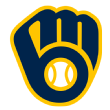
Milwaukee Brewers
1. Brice Turang, SS, 50 FV (No. 96 on top 100)
2. Tristen Lutz, RF, 45+ FV
3. Ethan Small, LHP, 45 FV
4. Marco Feliciano, C, 45 FV
5. Zack Brown, RHP, 40+ FV
6. Aaron Ashby, LHP, 40+ FV
7. Eduardo Garcia, SS, 40 FV
8. Corey Ray, CF, 40 FV
9. Micah Bello, CF, 40 FV
10. Drew Rasmussen, RHP, 40 FV
2020 impact: Zack Brown
Ranked breakout pick: Eduardo Garcia
Unranked breakout pick: Hedbert Perez
Ranked prospects beyond the top 100: Lutz has 70-grade raw power and a plus arm but hasn't quite put all the pieces together yet in pro ball. He'll be 21 in Double-A this year and hit 13 homers last year, but he needs to make more contact or have power come out to profile as the above-average regular his tools suggest. Small works in the low 90s with great deception, location and four-seam rise to his fastball to help it play a few ticks better than its velocity. His curveball is fringy, but he knows how to pair it with his heater, and the changeup shows flashes of being a swing-and-miss pitch. There's midrotation upside with pretty ordinary raw stuff, but Small is now 23 with an elbow surgery and a limited pro track record.
Feliciano has above-average raw power that he tapped into for the first time in 2019 and could benefit from robo-umps as he's just fine as a receiver behind the plate. Brown had a tough 2019 with the turbo ball in Triple-A but early returns this spring are strong after some adjustments were made to his delivery and pitch mix. Ashby has fringe-to-average qualities across the board, but a knockout curveball and similar slider that help him have the stuff to fit in a number of roles.
Garcia had an injury-shortened pro debut after signing for $1.1 million in 2018 but stood out in instructional league after signing and so far this spring. He's a no-doubt shortstop who is a plus athlete with projection for his other tools to be average or better. Ray is a plus-plus runner with plus raw power that's falling into the Corey Patterson range of prospects whose giant tools are undermined by swing-and-miss problems at the plate. His 2019 was atrocious, but his 2018 season had him on a low-end regular to strong reserve trajectory. Bello flashes above-average tools across the board and has good instincts, but is still just a teenager balancing all the elements in pro ball. Rasmussen has had two Tommy John surgeries but is back throwing up to 99 mph again, and he still has an above-average slider and could fit in a couple of big league roles in late 2020.
Others of note: CF Hedbert Perez is the Brewers' top prospect out of their 2019 international class. He's 5-foot-11 and has matured physically since agreeing to a deal, leveling up from what his bonus and pre-signing reputation suggests. He has above average contact skills, projected raw power, speed, and arm strength to go with a center-field fit. His toolset (but not his frame) are similar to those of Cubs CF Brennen Davis, who became a Top 100 prospect after he excelled in Low-A; that's a possible outcome for Perez after the 2021 season. C Payton Henry has worked to improve behind the plate and now projects to stay back there. He has plus raw power and gets to some of it in games, but pitch selection makes it more of a backup profile. CF Joe Gray is strong in center field despite just 55-grade speed. He has a plus arm and 55- or 60-grade raw power, so the profile is strong, but the pitch selection lags and the contact haven't shown up in games yet. RF Eduarqui Fernandez signed for $1.1 million in 2018 out of the Dominican Republic and clubbed 11 homers in his debut in the DSL; he projects for plus raw power but just turned 18. RF Cooper Hummel is a candidate to gain from automatic strike calling: he moved off of catcher in 2019 to play in the outfield corners, but he has a plus arm to go with a power-and-patience approach that blossomed in Double-A last year. CF Carlos Rodriguez is an easy plus runner and defender who also has contact skills but very little power and he's still a teenager who hasn't gotten out of rookie ball. 3B Lucas Erceg is a big guy with a huge arm falling into the Kaleb Cowart nexus: he might have to convert to the mound because the offensive tools aren't showing up in his stat line at the upper levels.
LHP Antoine Kelly was a second-rounder out of an Illinois junior college after the Padres made a run at him out of high school in 2018. He's a 6-foot-5 lanky athlete in the Amir Garrett mold who has thrown up to 98 mph and flashed an above-average-to-plus slider (that he barely threw in pro ball), though the changeup, command and consistency point to a relief fit. The velocity of RHP Trey Supak sits in the low 90s and he leans on his curve, changeup and feel for pitching to be a solid inventory arm. LHP Clayton Andrews stands just 5-foot-6 but is an excellent athlete with a high-spin rate, plus hook and a plus changeup and enough velocity who is also playing center field in a bid to be a two-way 26th man type. Remember RHP Phil Bickford? The 2015 first-rounder is back, with his fastball velocity sitting 92-94 mph and hitting 95 mph to go with an above-average slider, so he could be a big league relief option in the tail end of 2020. RHP Alec Bettinger is also in the Supak area, working with an ordinary fastball, but above-average other stuff that helps him play as an upper level depth arm. RHP Dylan File is another upper-level inventory arm who knows how to pitch. RHP Devin Williams had things click after years of injuries and control issues, hitting 100 mph with his fastball and reaching the big leagues with solid/average breaking stuff but well below-average command.
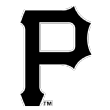
Pittsburgh Pirates
1. Ke'Bryan Hayes, 3B, 55 FV (No. 26 on top 100)
2. Oneil Cruz, RF, 55 FV (No. 29)
3. Mitch Keller, RHP, 50 FV (No. 66)
4. Travis Swaggerty, CF, 50 FV (No. 69)
5. Liover Peguero, SS, 50 FV (No. 84)
6. Quinn Priester, RHP, 45+ FV
7. Tahnaj Thomas, RHP, 45+ FV
8. Jared Oliva, CF, 45 FV
9. Brennan Malone, RHP, 45 FV
10. Ji-Hwan Bae, SS, 45 FV
2020 impact: Ke'Bryan Hayes and Mitch Keller
Ranked breakout pick: Ji-Hwan Bae
Unranked breakout pick: Rodolfo Nolasco
Ranked prospects beyond the top 100: Priester was a cold-weather, athletic, prep projection arm entering the 2019 draft spring, then he had a velo spike that vaulted him into the middle of the first round. He is 6-foot-4, and he has up to 97 mph speed with three pitches and command that project for above average. Thomas came over in the Jordan Luplow trade from Cleveland as a raw conversion arm from the Bahamas with good early returns. He continued to progress quickly from there, sitting in the mid-90s and hitting 100 mph with elite athleticism, and he has a near-ideal 6-foot-4 frame, a curveball that flashes plus and starter traits. Oliva has a solid approach and average contact skills, but he doesn't fully tap into his 55-grade raw power due to a flat swing plane. He is a plus runner who can stick in center field and is a late bloomer that can be a low-end everyday player after a mediocre college career.
Malone was a prep arm to monitor early in his high school career and regularly sat in the mid-90s but was sometimes out of control on the showcase circuit, then he made real progress in his draft spring. His command now projects for average, with above-average control and four pitches average or better, headlined by a fastball up to 99 mph and an above-average-to-plus slider. Bae signed for $1.3 million out of Korea in 2017, and he is now a sleeper pick to end up on a top 100 next year. He is an easy plus runner who will likely stick at shortstop, and he shows above-average contact skills along with solid pitch selection but below-average power.
Others of note: 2B Rodolfo Castro is a power-over-hit second baseman with above-average raw power and speed that got to High-A just a month after turning 20. CF Sammy Siani is the younger brother of Reds prospect Mike Siani, and they have a similar skill set. Sammy is an above-average runner who profiles in center field and has some power ceiling for a center fielder, though he could lose a step and move to left field. LF Cal Mitchell is a free swinger with a pretty swing and mostly average tools, so he is more of a platoon/reserve type, unless there's a breakthrough. RF Rodolfo Nolasco has a classic right-field profile and some very positive offensive indicators (above-average arm, raw power, exit velos for his age); but he also made his pro debut playing in the DSL at age 17, so there's a ways to go. 1B Mason Martin has 65-grade raw power and knows how to get to it in games, but the margin for error is very small between an early-peaking low-end regular and 4A slugger.
RHP Cody Bolton has a less-than-ideal delivery and an injury history but can use an above-average three-pitch mix in a number of roles. RHP Nick Mears is another under-the-radar amateur arm who now hits 100 mph, has a solid average breaking ball and fits as a middle reliever. RHP Santiago Florez is a teenager who sits 92-95 mph and flashes a plus curveball as part of a starter's repertoire with a 2019 velo spike, but the delivery points to a relief future. RHP Nick Burdi is 27 and is back up to 100 mph post-Tommy John, but he has small margin for error given his command and history. RHP Travis MacGregor was a pop-up prep arm in 2016 who progressed well until a 2018 Tommy John surgery. He hasn't been back on the mound in an official game yet, but he had shown fourth-starter upside.

St. Louis Cardinals
1. Dylan Carlson, LF, 55 FV (No. 28 in the top 100)
2. Nolan Gorman, 3B, 55 FV (41)
3. Ivan Herrera, C, 50 FV (97)
4. Matthew Liberatore, LHP, 50 FV
5. Zack Thompson, LHP, 50 FV
6. Andrew Knizner, C, 45 FV
7. Lane Thomas, CF, 45 FV
8. Genesis Cabrera, LHP, 45 FV
9. Junior Fernandez, RHP, 40+ FV
10. Trejyn Fletcher, CF, 40+ FV
2020 impact: Dylan Carlson
Ranked breakout pick: Zack Thompson
Unranked breakout pick: Jhon Torres
Ranked prospects beyond the Top 100: Liberatore was one of the last cuts from the Top 100, as a former Top 100 type that the Rays traded under two years after they took him 16th overall in the draft. He's picturesque: a 6-foot-5 southpaw with athleticism and projection who has thrown up to 97 mph and flashes four above-average pitches -- including a knockout curveball -- to go with above-average command projection. He didn't get many whiffs on his fastball last year due to its more sinker-like shape, but that's not negative on its own. Thompson was the Cardinals' first-rounder in 2019 after a strong season for Kentucky and he has some similarities to Liberatore as a lefty with a bunch of above-average qualities and a signature knockout curveball. He's two years older and will probably be at the same level or maybe a level higher in 2020, with some history of velocity fluctuation and arm soreness in college that will worry scouts until he has a problem-free year or two.
Knizner was once the trendy pick to take over for Yadier Molina one day, but Molina seems ageless, Carson Kelly was already traded from catcher-in-waiting and now Ivan Herrera might overtake Knizner by the time Molina retires. Hitting for contact is Knizner's only above-average tool, and he's offense-over-glove at this point, so automatic strike-calling or an AL club makes the most sense for his future. Cabrera can be wild, reaching up to 99 mph with below-average command, but with a solid/average breaker and changeup to go multiple innings.
ESPN Daily Newsletter: Sign up now!
Thomas is something like current day Kevin Pillar: above-average-to-plus runner, defender and thrower with a fringy offensive presence, but enough raw power to sell out for 20-ish homers. Fernandez has dealt with injuries but pitched across three minor league levels last year in relief en route to 13 big league appearances. His velocity sits 95-99 mph to go with a plus changeup and mostly-average slider, limited somewhat by below-average command, all in a Fernando Rodney-type package. Fletcher reclassified to the 2019 draft class months before the draft and played a rain-filled spring against weak competition in Maine, so many teams weren't prepared to make a seven-figure decision on him. The Cards gave him $1.5 million in the second round to spurn Vanderbilt; he has raw tools (plus bat speed, raw power, speed, arm strength) but there are also real contact concerns.
Others of note: RF Jhon Torres, 19, has a traditional everyday right-field tools profile, with surplus raw power and arm strength to go with contact issues that sometimes hold him back. SS Edmundo Sosa already had big league time and has among the worst pitch selection in the minors, but otherwise is a typical glove-over-bat, contact-oriented utility infielder. 3B Elehuris Montero has wrist issues that sank what looked like a promising 2019. He has improved at third base and has everyday upside, but he's another player who has among the worst pitch selection of any prospect in the minors. 1B Luken Baker has 70-grade raw power, solid pitch selection, and was throwing into the mid-90s on the mound in high school but has been hurt a lot and doesn't have much else in the way of standout tools or skills. He's probably somewhere in the platoon/bench bat continuum.
RHP Johan Oviedo is massive at 6-foot-6 and has been clocked throwing up to 97 mph to go with an above-average four-pitch mix that he struggles to command at the moment. RHP Kodi Whitley has thrown up to 98 with an over-the-top arm slot that works up in the zone, akin to Chris Devenski; he'll get a big league look this year. RHP Tony Locey took a step forward in his draft year at Georgia, holding mid-90s velo late into games with a solid average breaking ball, but control-over-command that fits better long-term in relief. RHP Jake Woodford was added to the 40-man and is an inventory arm that works in the low 90s with average stuff that could fit in a few roles at the end of a staff.
National League West
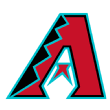
Arizona Diamondbacks
1. Kristian Robinson, CF, 55 FV (No. 31 in top 100)
2. Daulton Varsho, C, 55 FV (No. 34)
3. Geraldo Perdomo, SS, 50 FV (No. 62)
4. Alek Thomas, CF, 50 FV (No. 72)
5. Corbin Carroll, CF, 50 FV (No. 80)
6. J.B. Bukauskas, RHP, 45+ FV
7. Corbin Martin, RHP, 45+ FV
8. Blake Walston, LHP, 45+ FV
9. Wilderd Patino, CF, 45+ FV
10. Matt Tabor, RHP, 45 FV
11. Jon Duplantier, RHP, 45 FV
12. Levi Kelly, RHP, 45 FV
2020 impact: Daulton Varsho and J.B. Bukauskas
Ranked breakout pick: Blake Walston
Unranked breakout pick: Drey Jameson
Ranked prospects beyond the top 100: Bukauskas has had big stuff in a small package since his high school junior/senior spring, when he reclassified to get to North Carolina early. Given his size, below-average command, a college velo dip and a car accident that caused a slipped disc in his back, he seems to fit best in relief, where his often-bonkers stuff (60- or 70-grade fastball, slider and changeup) will fit well. Martin came over in the Zack Greinke deal after Martin went down with Tommy John surgery, as he might not have been available otherwise as a top-50 prospect on the verge of the majors. Martin was up to 98 with an above-average-to-plus four-pitch mix, and he might return late in 2020 but more likely in the fall instructional league. Walston is a late pop-up prep lefty from the Wilmington, North Carolina, area who will show glimpses of Cole Hamels-type upside. He will sit around 90 and hit 94 mph. He has two curveballs, and the harder one flashes 70 grade at times, while his changeup isn't used much but is above average. Walston is a projectable athlete with a feel for pitching and a chance to be above average at everything.
Patino has a unique skill set with above-average-to-plus projection in raw power, speed, fielding and arm tools as an 18-year-old, putting him on par with the top high school bats in the country. He has played 40 official games in the States, so there's a similar level of uncertainty around what his hit tool might be and the trajectory of his development. Tabor is 21 and has developed nicely after going in the third round in 2017 with a late velo spike at a Massachusetts high school; he would be in the first-round mix now as a college arm. Tabor sits in the low 90s with four-seam carry and mixes in an above-average-to-plus changeup, a solid average curveball and an above-average command due to his plus athleticism; it adds up to a league-average starter. Duplantier, 25, has a little more stuff and comparable command to that of Tabor but has a longer injury past, along with an up-and-down 2019. Kelly had a reliever look in high school, up to 96 mph with a 55- or 60-grade slider but below-average command and a stiff delivery from a maxed-out frame. He has slimmed down a bit and improved the consistency of his slider, but soon he won't be able to bully hitters at 90-94, so he'll need to develop a third pitch or better fastball command to keep them off the slider.
Others of note: 1B Seth Beer has a great name and big league skills -- but ones that fit better in the AL. He has 65-grade raw power and enough pitch selection to get to it in games, but he is bordering on a DH defensively. He doesn't have the bat control to project to hit better than about .250, so he'll have to get to every bit of that power and draw a bunch of walks (certainly possible) to be more than a platoon bat whom you try to hide on defense. 2B Andy Young came over in the Paul Goldschmidt deal, and Young also is defensively limited and gets to all of his 55-grade raw power, but at the cost of some contact; he is toeing the line of bench bat and low-end regular. SS Blaze Alexander also has a great name and a flashy tool in his 80-grade arm that he loves to show off. After a BABIP-fueled debut, Alexander came back to earth, and now the stat line reflects what he'll likely be: a lower-average shortstop with some raw power.
RF Dominic Fletcher has above-average raw power, arm strength and defensive instincts. He could be a good platoon outfielder, but I think there's a reasonable chance he works around or improves on his below-average pitch selection to be a solid 2-win player. CF Jeferson Espinal is a 17-year-old with plus speed and potential plus defensive skills but a raw offensive game. 1B Pavin Smith has always had raw power, but he never hit for power at Virginia, where a high-contact rate and flat swing path were emphasized. He still has both of those and now is playing passable defense in the outfield, as well, but there isn't enough impact in the bat for more than an average everyday player, with a shot that he is a platoon bat.
RHP Drey Jameson is smallish and has command issues but flashes three plus pitches, so he'll find a big league role if he stays healthy. RHP Justin Martinez popped up last year hitting 98 mph as a 17-year-old and showing the elements to develop into a starter, but nothing else is plus and it's still a little rough. LHP Tommy Henry is a pitchability lefty who works around 90 and up in the zone with a four-seamer that plays up due to life, extension and location. His off-speed pitch and command are above average for a back-end starter profile.

Colorado Rockies
1. Brendan Rodgers, 2B, 55 FV (No. 36 in top 100)
2. Ryan Vilade, 3B, 45+ FV
3. Ryan Rolison, LHP, 45+ FV
4. Michael Toglia, 1B, 45 FV
5. Brenton Doyle, CF, 45 FV
6. Sam Hilliard, CF, 45 FV
7. Terrin Vavra, 2B, 45 FV
8. Colton Welker, 3B, 40+ FV
9. Aaron Schunk, 3B, 40+ FV
10. Riley Pint, RHP, 40 FV
2020 impact: Brendan Rodgers
Ranked breakout pick: Brenton Doyle
Unranked breakout pick: Adael Amador
Ranked prospects beyond the top 100: Vilade has above-average hit, raw power and arm strength tools, with a timely swing adjustment in 2019 that brought out more in-game power, since he might move to an outfield corner, with competent ability at all four corner spots. Rolison has never been hurt despite being on the national scouting radar since his high school junior season. He's shown some different looks over the years -- sitting mid 90s for stretches, throwing too many curveballs, showing 30 command -- but made nice progress in 2019 to settle in to what should be about what he is in the big leagues. He works in the low 90s and touches 96, mixes in a 55- or 60-grade curveball and a 55-grade changeup with about average command. The switch-hitting Toglia made a jump when he got to UCLA, showing plus raw power from both sides of the plate, at least average contact skills, along with a 55 glove at first base and enough agility and arm to play either outfield corner. His draft spring started slowly after a weak Cape summer and his righty swing is far enough behind that he could be a full-time lefty hitter, but there's Lance Berkman upside.
Doyle is right there with Miami's Peyton Burdick as the 2019 picks that, after a debut summer, would jump the most in a redraft of the class. Doyle went to Division II Shepherd in West Virginia and got on every team's radar during the spring for his raw tools, but he had faced no Division I-level competition in the spring or summer, so opinions of his hit tool varied widely. Colorado took him 129th overall, even later than we'd heard he would go, and Doyle went off in 51 Pioneer League games, with a more emphatic answer than a strong Cape showing or full year in the SEC could have provided. His substantial tools -- plus raw power, plus speed, center-field fit, above-average arm -- all played in games. It wouldn't shock anyone if he has comparative trouble in 2020 since he so substantially smashed expectations, but there's an allure here since there are everyday tools and no negative information.
Hilliard hit a combined 42 homers and stole 22 bases last year in supercharged offensive environments (mostly Triple-A) and also has some loud tools: 60 raw power, 60 arm, 55 speed. Given his power-focused approach, it adds up to high variance, slightly below-average offense to go with an outfielder who can play all three positions. He's probably a role player, but he's big league-ready. Vavra is an underrated potential offensive-minded middle infielder. He was a third-round pick out of Minnesota, where he was a pop-up prospect, and spent all of 2019 at Low-A, where he turned 22 during the season. He has plus plate discipline and gap power to go with mostly average tools. He'll need to be challenged more to see if he's a utility guy or low-end everyday type. Welker is something like Ty Wigginton: fine at third, passable at second, probably more of a first baseman-slash-positionless-bat. Welker doesn't have the same punch but has above-average contact skills to be a useful corner utility bat. Schunk needs a bit of a swing adjustment to pull and lift the ball more but has raw power to profile at third base and is an above-average defender there with a plus arm. Pint has some truly bonkers stuff (up to 102 mph, 70-grade slider) but erratic control that is nearly unprecedented for a top-five pick. The upside is still sky high, but the odds of his becoming a big leaguer of consequence keep going down.
Others of note: 1B Tyler Nevin, the son of Phil, has above-average contact skills but just fringy in-game power. Since he's now at first base and maybe left field, that makes him more of a bench or platoon type. 1B Grant Lavigne got some buzz for a loud pro debut and has low-end everyday tools, but he leveled off and is in the unenviable position of not showing elite exit velocities or launch angle as a 20-year-old first base-only prospect. SS Julio Carreras played last year at age 19 and is an above-average runner, thrower and fielder at shortstop. He's still raw at the plate but has feel for contact. SS Adael Amador was the Rockies' top 2019 international signing at $1.5 million; he flashes plus speed, arm strength and defensive potential to go with a lanky frame and some feel at the plate as a switch-hitter.
RHP Ashton Goudeau had a crazy breakout as a 27-year-old former minor league free agent in 2019 thanks to a fastball up to 96 mph with plus rise and a plus curveball. LHP Helcris Olivarez is a 6-foot-2 lefty who sits 92-95 mph and flashes a plus curveball, but the changeup and command both lag to the point that the bullpen is his likely destination. RHP Tommy Doyle has always had starter traits but has excelled and had much better velo in the bullpen, sitting 94-98 mph with a plus breaker that could be in Denver in late 2020. RHP Ryan Castellani works in the low 90s with an ordinary fastball but an above-average slider and changeup. His command has never come around despite widespread projecting that it will, so he's now a long-relief type.
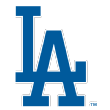
Los Angeles Dodgers
1. Gavin Lux, 2B, 65 FV (No. 2 in top 100)
2. Dustin May, RHP, 60 FV (No. 19)
3. Josiah Gray, RHP, 55 FV (No. 46)
4. Keibert Ruiz, C, 50 FV (No. 77)
5. Brusdar Graterol, RHP, 50 FV (No. 92)
6. Diego Cartaya, C, 45+ FV
7. Michael Busch, 2B, 45 FV
8. Andy Pages, RF, 45 FV
9. Tony Gonsolin, RHP, 45 FV
10. Kody Hoese, 3B, 45 FV
2020 impact: Gavin Lux
Ranked breakout pick: Michael Busch
Unranked breakout pick: Luis Rodriguez
Ranked prospects beyond the top 100: Cartaya was the consensus second-best 16-year-old in the 2018 international class behind Marco Luciano. Luciano has taken off and Cartaya's stock has also moved northward. Cartaya played most of his debut season in the AZL and stood out: He's advanced physically, deceptively athletic and projects to be above average behind the plate with a plus arm. Offensively, there's an above-average raw power projection, a solid approach and probably average contact skills; if even this median projection all comes together, he'll be a top-10 catcher in baseball. Busch was a stealth Top 100 candidate who might very well get there once he has played more than 10 pro games. He was the 31st overall pick last summer, six picks after Hoese, but scouts I spoke with thought Busch had more raw power (60-grade), a little more feel to get to it in games, he's left-handed and he has a shot to create more defensive value by being a shift-aided second baseman. Busch is a first base fit but played a bit of left field and second base in college and on the Cape, with availability to play second piquing interest the most: His could be a Max Muncy-type profile.
Pages fits a traditional right-field profile and was set to go to the Angels in the aborted Joc Pederson wing of the version of the Mookie Betts trade that wasn't. Pages has plus raw power, an above-average arm and enough contact/approach ability to get to his power in games (19 homers in 63 games in 2019) despite still being only 19. Gonsolin has been clocked throwing up to 100 mph in the past and is an athletic conversion guy, but he has been working more in the 92-94 mph range when starting. He throws from a high slot that creates rise and whiffs in the zone, pairing that pitch with a plus splitter and fringe-to-average slider and curveball. Gonsolin's command might limit him to one time through the order, but he's a valuable big league arm in 2020 of some kind. Hoese was an eligible sophomore in 2018 but didn't get much pro attention. He blew up in 2019 and went in the first round with a loud spring. Hoese is 6-4 but deceptively quick, enough to play third base, and has the twitch for above-average raw power and contact skills.
Others of note: 2B Omar Estevez will be 22 and in Triple-A this year but looks like a role player in the big leagues, particularly for the Dodgers. He's a below-average runner and fielder who relies on his offense, and he has above-average contact skills to go with fringe-to-average power. There's low-end regular upside, but more likely he's a platoon/utility type. CF D.J. Peters is a 6-6, 225-pound athlete who is an above-average runner with a plus arm and can play all three outfield positions. He also has 65-grade raw power and can get to most of it in games, and he can draw some walks, but his power-focused approach and long limbs mean his contact rates will be very low. CF Luis Rodriguez was the Dodgers' top 2019 international signing and has above-average speed, contact skills, arm strength, raw power projection and instincts. He's a bit of a tweener, and the direction his frame goes will dictate his position.
SS Jacob Amaya is a utility type with a contact-over-power approach, a very good eye and the skills to play solidly at all four infield spots. I project 3B Alex De Jesus to slide over from the shortstop role he's playing now, but the 17-year-old showed the potential for plus power and feel for loft in games. 1B Edwin Rios has some big league time and 70-grade raw power but little defensive value. He has a power-focused approach and is a bit too free of a swinger for it. 3B Miguel Vargas probably slides over to first base at this rate, but he has above-average raw power and contact skills that could be unlocked if he lifts the ball more.
The velocity of RHP Jordan Sheffield is now sitting at 95-98 mph, touching 99, but it's one of the rare high-velocity fastballs that also has a high spin rate and correct spin axis to create rise, one of the best combos of velocity and life in pro baseball. His curveball flashes plus and he also has a solid cutter, but he has below-average command. RHP Dennis Santana has had a good spring after an up-and-down 2019 and is on the 40-man, so he'll get big league looks this year, likely in relief. He's throwing up to 97 mph with his sinker, mixing in a slider and curveball that are above-average-to-plus and a usable changeup. RHP Michael Grove works 91-94 mph with plus rise on his fastball to go with an above-average curveball and starter traits. RHP Jimmy Lewis is a picture-perfect projection starter but hasn't pitched yet due to an arm issue that scared some teams off pre-draft.
RHP Mitchell White is similar to Grove, but with a little more velocity, less swing-and-miss to his heater and less command. RHP Ryan Pepiot was a 2019 pick out of Butler that's also along these lines but with three above-average pitches and command between the two. RHP Gerardo Carrillo was up to 100 mph in the Arizona Fall League and also has two above-average breaking balls, and is a likely relief fit. RHP Hyun-Il Choi is a teenage Korean righty with a sinker/slider combo that gives him back-end starter projection. RHP Joel Inoa hit 100 mph at Low-A but is still rough otherwise. RHP Marshall Kasowski is up to 97 mph with a deceptive over-the-top slot and could get a big league look in 2020 with a strong season.

San Diego Padres
1. MacKenzie Gore, LHP, 60 FV (No. 8 in top 100)
2. Luis Patino, RHP, 60 FV (No. 11)
3. C.J. Abrams, CF, 55 FV (No. 23)
4. Luis Campusano, C, 55 FV (No. 33)
5. Taylor Trammell, LF, 50 FV (No. 75)
6. Adrian Morejon, LHP, 50 FV
7. Hudson Head, CF, 45 FV
8. Gabriel Arias, SS, 45 FV
9. Ryan Weathers, LHP, 45 FV
10. Michel Baez, RHP, 45 FV
11. Edward Olivares, CF, 45 FV
12. Blake Hunt, C, 45 FV
13. Owen Miller, SS, 45 FV
14. Joey Cantillo, LHP, 45 FV
2020 impact: Adrian Morejon
Ranked breakout pick: Hudson Head
Unranked breakout pick: Yeison Santana
Ranked prospects beyond the top 100: Morejon shows flashes of Jesus Luzardo or Asa Lacy with his stuff and execution, but his heater plays down from its velocity and he has a long history of nagging medical issues that affect his workload. Short extension and sinker shape make his mid-90s heater (which can hit 99) play more 55-grade in games. His changeup is plus, command is starter quality and both breaking balls are average to above; this adds up to a third or fourth starter if he can string together a full, healthy season of solid execution. Head was a surprise bonus as a late-rising 2019 third-round pick out of a Texas high school. He has plus bat speed, running speed and contact skills to go with an average arm, average-ish raw power and a center-field profile. The Padres are very high on him and he is a trendy pick to have a loud full-season debut in Low-A and jump onto some top-100 lists, as a number of top 2018 draft prep bats did. Arias has an issue with pitch selection, chasing far too many pitches out of the zone. Everything else is in place for him to be a strong everyday shortstop if he can improve there: average contact skills and speed to go with a plus glove and plus-plus arm. Weathers is the son of former MLB reliever David and has great feel for pitching to go with deceptive athleticism for a maxed-out teenager. His velocity was typically 90-93, with an above-average curveball, changeup and command, but he gained weight and was working 86-90 mph late in 2019 after recovering from an injury. He's reported to camp in much better shape and has hit 96 mph, so he appears to be back in top form.
Baez was a top-100 prospect after his breakout pro debut in 2017 but has tumbled a bit in prospect value since then due to minor injuries that led to a stuff/command dip, which led to a 2019 move to the bullpen. He's back to being a starter this year and is back in the mid 90s with a plus changeup. A strong, healthy start to 2020 in the Triple-A rotation could move him into the top 10 of the system once again, as he'll lose eligibility. Olivares was acquired in late 2017 from Toronto after a breakout in Low-A at age 21 and has performed at about that level since then, with Triple-A coming in 2020 while he's on the 40-man roster. He's still a bit of a tweener that looks like a good fourth outfielder, with above-average raw tools across the board and roughly average contact skills. He also looks quicker, running plus or better this spring. Hunt has everyday upside after a 2019 breakout season at Low-A as a 20-year-old. He's been a projected average-or-better defender since going 69th overall in 2017, but his bat took a step forward with more contact and in-game power. Miller had a breakout year at age 22 in Double-A, taking a late-rising third-round pick from Illinois State and putting him on a prospect trajectory. He's fine at shortstop and has mostly average tools across the board, so there's low-end everyday upside; he'll open in Triple-A for 2020. Cantillo has some Joey Lucchesi vibes, delivering solid average stuff from a funky delivery and a high arm slot with lots of deception and feel; he might reach Double-A this year at age 20.
Others of note: SS Tucupita Marcano currently lacks the power to project as an everyday big leaguer, but he's still just 20 and could grow into it. He's a plus runner with plus contact skills and can play shortstop. SS/RHP Jake Cronenworth will get a big league look in 2020, has fringy offensive upside, can play all four infield spots, will get some outfield reps to increase versatility and can be a middle-relief type of arm, making for a perfect 26th man. SS Yeison Santana emerged late in 2019 as a potential everyday shortstop. He just turned 19 and has a solid approach, projectable frame and one of the best swings in the system, and he could stick at shortstop. 3B Hudson Potts was a first-round pick and has been young for each level, with Triple-A up next at age 21. He's power-over-hit and plays a strong third base, but he's more fringy offensively, projecting as a low-end regular if things go well. CF Jeisson Rosario has a good approach and some feel to hit to go with a center-field profile, but he came into camp overweight, with the needle pointing toward role player at the moment.
SS Reggie Preciado is the best talent from San Diego's 2019 international haul ($1.3 million bonus), and while he hasn't played in an official game yet, he's already impressing on the back fields with his feel to hit big league-caliber stuff in games. He's still giraffe-like at 6-4 and likely will move off shortstop as he fills out and adds power. LF Jorge Ona is 23 and still needs to lift the ball more to get to his low-end regular upside, but the elements are still there. RF Josh Mears was a second-round pick out of a Washington high school last summer, with plus raw power as the carrying tool showing up in his pro debut and in exit velos. The speed, defense and arm strength are all around average, and he stayed inside the zone better than most power-focused teenagers in his debut. There's plenty of other stock-down brand names or raw rookie-ball types left to name, but there are two sleepers ticketed for Low-A in 2020 to keep an eye on: catchers Brandon Valenzuela (stout, Mexican-born switch-hitter with two-way ability) and Jonny Homza (Alaskan native, former fifth-rounder who's made a lot of progress).
RHP Ronald Bolanos is something like the organization's eighth starter right now, with a four-pitch mix that's mostly average to a tick above and a fastball that was up to 99 or 100 mph last year, depending on the source. RHP Javy Guerra washed out as a glove-first shortstop acquired in the Craig Kimbrel deal and roughly a year ago moved to the pen, where he now throws a sinker 96-100 mph. His delivery and control are both better than you'd expect and he can throw a fringy slider for strikes. He's out of options, so he'll get a big league shot in the pen this year. RHP Reggie Lawson has fourth-starter stuff, but his command still needs to progress for him to get there; he had a minor injury this spring. RHP Anderson Espinoza, 22, hasn't pitched since 2016 due to two Tommy John surgeries but is back on a mound and the club is cautiously optimistic, with the delivery, frame and confidence all the best they've been since he was one of the best 18-year-old pitchers in recent memory. RHP Andres Munoz averaged 99.9 mph in the big leagues and also flashed a plus slider but has some minor elbow trouble at the moment and the command is just OK. He'll also get lots of big league time this year. RHP Reiss Knehr (92-96 mph, touches 98, above-average breaker, athletic conversion arm from Fordham) and Steven Wilson (3,000 rpm slider, heater up to 97 mph) are two upper-level relief sleepers to keep an eye on for big league time.
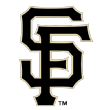
San Francisco Giants
1. Joey Bart, C, 60 FV (No. 7 in top 100)
2. Marco Luciano, SS, 60 FV (No. 18)
3. Heliot Ramos, RF, 50 FV (No. 74)
4. Hunter Bishop, LF, 45+ FV
5. Luis Matos, CF, 45 FV
6. Luis Toribio, 3B, 45 FV
7. Will Wilson, 2B, 45 FV
8. Mauricio Dubon, SS, 45 FV
9. Sean Hjelle, RHP, 45 FV
10. Logan Webb, RHP, 40+ FV
2020 impact: Mauricio Dubon and Joey Bart
Ranked breakout pick: Luis Matos
Unranked breakout pick: Alex Canario
Ranked prospects beyond the top 100: Bishop was a tantalizing tool package who never really performed until his draft year in 2019. He is a plus runner who plays a passable center field but might slide over to left field due to a 40 arm. He has 65-grade raw power, but his pitch selection and bat control are both a bit below average, so he projects now for something like .250, a below-average walk rate and 25 bombs. That's good, but if it comes with a big platoon split and in left field, it's more low-end regular. Matos is still just 17 and has plus foot speed and bat speed that could eventually produce plus raw power, but there's a healthy amount of risk on the hit tool, even more than that of Bishop. Toribio is a teenager who is a safer bet to hit and also has plus raw power, but he might end up sliding over to first base. Wilson was acquired to take Zack Cozart's contract after going in the first round out of NC State last summer. He has a bag of 50-grade tools but can capably play any position on the field, with some scouts speculating he could handle a move behind the plate.
Dubon has excellent bat-to-ball skills that make for elite contact rates because he has little power and even less game power. He can play a solid shortstop, but his lack of punch means he profiles more as a good utility guy who plays all over the diamond; however, he could be a low-end regular if he can take one more step forward. Hjelle (said like the partner of peanut butter) is 6-foot-11 with a stretch-four body comp and the athleticism to repeat his delivery even with such long limbs. His 91-94 mph sinker plays up due to extension, plane and location, so he can take advantage of his length without turning into a stiff, always-injured pitching machine, which happens with many giant pitchers. His command is above average, and his off-speed is also about average, so he has a back-end-starter type of profile. Webb, who has had Tommy John and a PED suspension, sits 92-94 mph with above-average off-speed and fringy command. He could fit in a number of roles, but he's a useful young big league inventory arm in the short term.
Others of note: RF Alex Canario, 19, has plus bat speed, plus raw power and a plus arm for the classic projection right-field profile, but his pitch selection and bat control lag a bit below average. LHP Seth Corry is into the mid 90s and flashes three above-average pitches, but he is a control (in the strike zone) over command (quality locations) type. CF Jairo Pomares signed for just less than $1 million in 2018 out of Cuba, and he has solid average tools across the board with a center-field profile at age 19. RF Jaylin Davis is a late bloomer with big raw tools (65-grade power, 60-grade speed) that he has some trouble getting to against top-tier pitching due to a flatter-planed swing and below-average bat control.
RHP Gregory Santos just turned 20, so it's still early, but he was limited to eight starts in 2019 due to a shoulder issue, and the command isn't there yet. He has a sinker that is up to 98 mph and an above-average slider that could project to a league-average starter or better with command gains. RHP Melvin Adon sits 97-100 and has hit 102 mph to go with a slider that's plus, so there's plenty of stuff here; but the command is well below average and he is now 25. RHP Blake Rivera also toes that line of impact starter stuff, but he has more reliever type of command for now. He is up to 98 mph and has an above-average-to-plus curveball, and that's when starting, so he could be an impact late-inning arm with 45 command. RHP Prelander Berroa is one more teenager with above-average stuff that fits as a quality starter but command that fits in relief.
